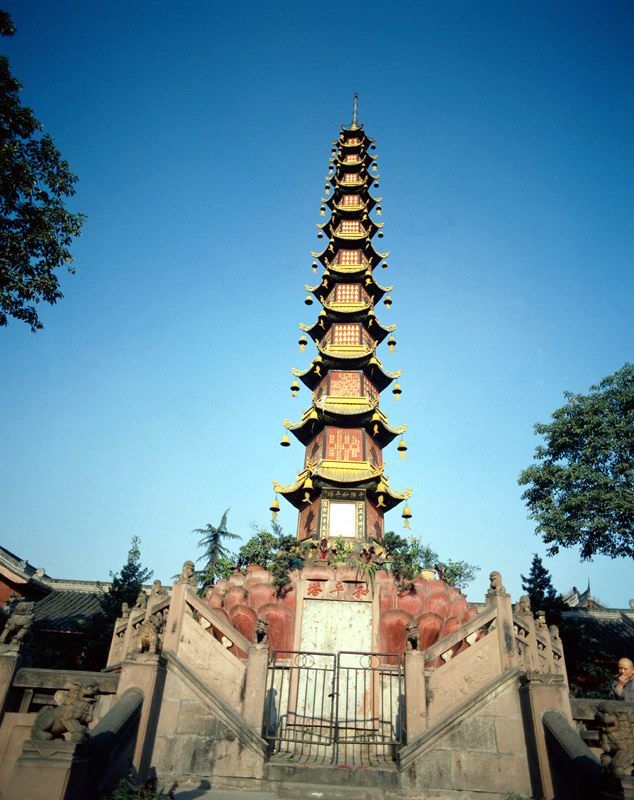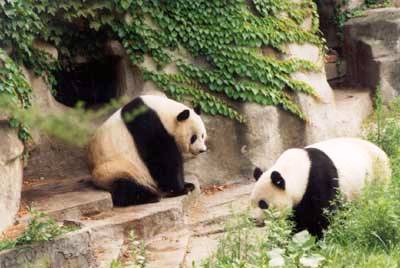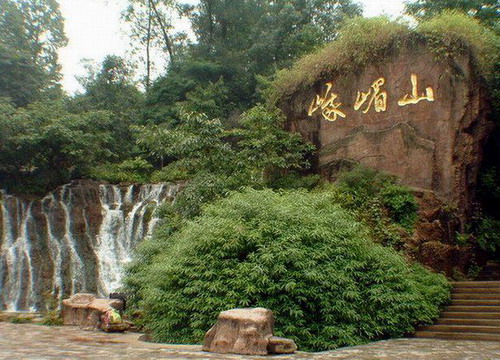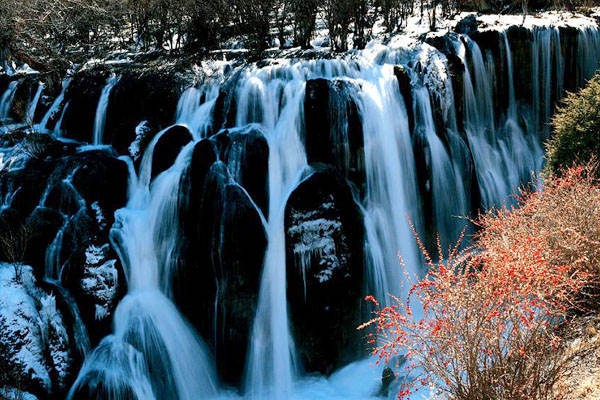Wenshu Temple

Wenshu Temple (admission RMB 2, open 6 am - 20h30 pm), a monastery which dates back to the Tang dynasty, is Chengdu's largest and best-preserved Buddhist temple. Originally known as Xinxiang Temple, it was renamed after a Buddhist monk who lived there in the late 17 th century.
Perhaps the best thing about the monastery is the bustling crowd of worshippers who flock to the place. Together with the exquisite relief carvings that decorate many of the buildings in the complex, they render the temple well worth a visit.
On the monastery grounds check out the teahouse, one of the largest and most bustling in Chengdu with what seems like acres of tables. If you want to join in, sit one the west side of the path, closest to the main temple, where tea cost RMB 1. The tea must be greener on the other side of the path where it costs RMB 10. The vegetarian restaurant next door to the teahouse has great food at good prices.
The alley off Renmin Zhonglu, on which Wenshu Temple is located, is a curiosity in itself, filled with joss-stick vendors, foot-callus removers, blind fortune-tellers with bamboo spills, and flower and fireworks sellers.
The Wenshu (Manjusri) Monastery was built in the Southern Dynasty and rebuilt in the Qing Dynasty. Its main buildings include the Hall of Lokapala, the Hall of Three Bodhisattvas, Daxiongbaodian (Precious Hall of Sakyamuni), Shuofatang (The Buddhist Lecture Hall), and the Scriptures Hall. There are in the Monastery over 400 statues of stone, iron, bronze, painted-clay as well as wood, in various size and shape. Among them, 19 bronze statues were cast in the Qing Dynasty, and 10 iron statues in the Song Dynasty. The skull of Xuanzang, a monk of the Tang Dynasty still kept in the Monastery is most precious.
There are numerous Buddhist cultural relics and arts in the Scriptures Hall. They comprise white-jade statue of Buddha from Myanmar, incantations on pattra-leaf in Sanskrit language from India, Japanese gold-plated scripture cylinder of the Tang Dynasty, embroidered picture of Songwen, the Diamond Sutra, calligraphies of the Song, Ming and Qing Dynasties, paintings of Biyan, and Zhuchan, as well as works of famous calligraphers and painters like Heshaoji, Zhengbanqiao and Zhangdaqian in addition to Nanzang scriptures of Ming Dynasty, Zhuangzang scriptures of the Qing Dynasty, and Dade scriptures of Japan. These masterworks of art of both ancient and contemporary China, serve as a testimony to her friendly exchanges with the world.
The newly built Peace Pagoda of A Thousand Buddhas has 11 stories with a height of 22 meters, and decorated with a small yellow bell hung on each of the six upturned corner eaves of every story. Blown by the wind, the bells give out melodious sounds. It is the tallest iron pagoda casted in China.

Chengdu Research Base of Giant Panda Breeding is situated on the Axe Hill 10 kilometers from the north suburb of Chengdu City. It covers an area of 600 acres.

Mt. Emei boasts unique natural and cultural charms, such as the Wannian Temple, which has been designated a state-level protected site by the State Council.

It is said that the Jiuzhaigou Valley( Jiuzhai means nine villages)was named after the nine villages contained in the vast nature reserve.

